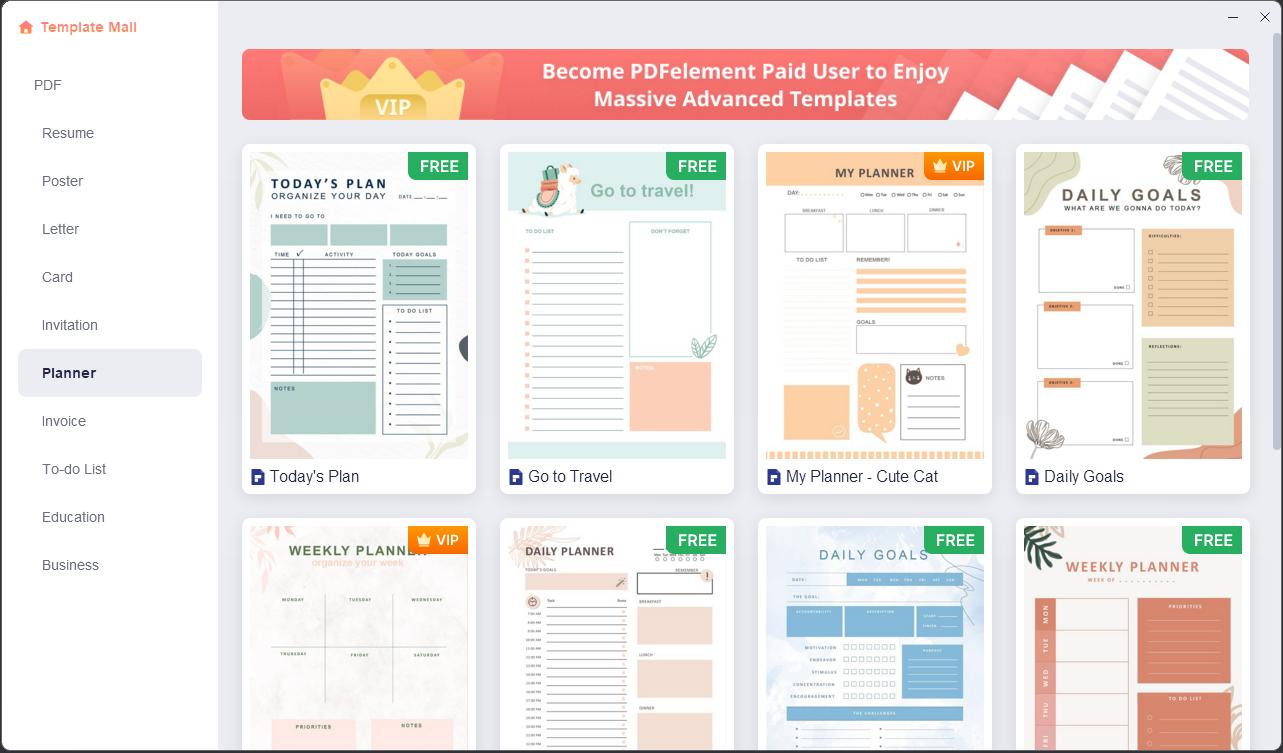
We’re all familiar with making plans. Our experiences may be different but the process is essentially the same. However, when you make a plan, are you sure that things are going to work out the way you predicted or assumed? Absolutely not. As they say, even “ the best-laid plans of mice and men often go awry.” Nevertheless, it is equally true that having a plan is infinitely better than not having one. This is especially true of the more important things in our lives, such as our careers, relationships, and so on. In fact, planning is so essential to every aspect of life that you sometimes need a Plan B or Plan C to make sure things go your way.
But how do you make a plan? What are the elements of a solid plan that has a higher chance of success? This is an in-depth piece on the art of planning and how to create or make plans that are as foolproof as they get.
Let’s begin with the basics.
What is a Plan?
The Oxford Dictionary defines a plan in different ways:
As a noun, a “plan” can be one of the following:
“a detailed proposal for doing or achieving something.”
“an intention or decision about what one is going to do”
“a detailed map or diagram”
As a verb, a “plan” is defined as follows:
“decide on and arrange in advance”
“design or make a plan of (something to be made or built)”
Using a combination of these definitions, a plan can be boiled down to its essence: a decision, suggestion, or tool that lets you get from one place or situation to another that is more desirable.
In that context, a plan typically refers to a formal documented version of a series of actions, requirements, instructions, or framework of criteria that ultimately lead to the desired result.
What are the Types of Planning (Types of Plans)?
In a broader sense, planning can be categorized by their scope or breadth, by a given time frame, by specificity, or by frequency of use, as depicted in the diagram below:
This broad overview tells us that making a plan is based on the purpose of that plan or the modality of how it is executed.
For instance, a time-bound plan may be intended to achieve a short-term objective, such as finding a route on a map or winning a game of soccer. This same plan may be for single-use but could also be a standing one that is applied frequently. On the other hand, a long-term plan works on a longer timeline, such as a retirement plan or a five-year personal growth plan.
If we go deeper into the types of plans, we can categorize them as follows:
-
Objectives - This type of plan lays out the goals of a particular action or set of actions. It acts as a blueprint for the person or team executing the plan and outlines the core objectives.
-
Policies - These are essentially a set of protocols that should be followed in an organization or by a group.
-
Rules - This type of plan includes laws, regulations, and other mandatory statutes that people are expected to follow at all times.
-
Procedure - This variant involves outlining a process or a set of steps to be followed to achieve a predefined result.
-
Program - A sequence of events that are usually timed and set to a specific schedule.
-
Schedules - Scheduling is a key type of plan in any tactical discussion. If the key objectives are the strategic components, scheduling is the method of executing them and achieving the objectives. Making a daily routine is an example of using schedules to execute a plan.
-
Budget - This is a financial plan that lays out expenses for key items, including essentials, optionals, and contingencies. It tells you how much should be spent, and on what.
-
Forecasting - A crucial area for most businesses, forecasting is the science of predicting the future within a reasonable margin of error. Sales projections, staffing forecasts, contingency planning, resource requirement projections, etc. are all examples of forecasting.
Examples of Plans
Example 1
The plan of a building tells the construction crew how the architect has envisioned that space and what they want as the final result. The plan or blueprint is how that communication happens. In addition, there could be schedules to be adhered to, safety instructions, checklists for complex tasks, and so on. All of these are part of the “plan” for the building.
Example 2
Another example would be a game plan or “play”, which is a sequence of actions that a team is expected to carry out in order to gain an advantage over the opponent and win the game. This type of planning is often used in the business and corporate scenarios, where creating action plans or PoAs (Plans of Action) is integral to gaining a strategic advantage over the competition. In fact, nothing usually happens in the world of business without a proper plan in place, no matter how informal or formal it might be.
Example 3
Dance choreography, in a sense, is a plan, although the objective is not to defeat an opponent but to woo the audience. The plan in this case depends heavily on elements such as sequence, timing, synchronicity, etc., all of which are outlined in the various choreographic components.
Example 4
Yet another example would be a budget that outlines projected expenditures for the week, month, or year. These expenses are balanced against available funds, and any overspending can be quickly tracked and addressed only if there is a budget in place.
All of these are plans because they act as a bridge from Point A to Point B, where Point A is your current position or situation and Point B is the desired result.
Why is Planning Important?
The Importance of Planning: 22 Reasons Why Plans and Plannings are Critical to Any Endeavor |
||
| Higher chance of succeeding at your goals | ||
| Productivity is greatly enhanced through proper planning and execution | ||
| Brings professionalism into the picture | ||
| Gives you the satisfaction of completing a task as envisioned during planning | ||
| Regret is eliminated when a proper plan is in place for all contingencies | ||
| The right kind of plan helps absorb errors without impacting the result | ||
| It unearths potential problems down the road and lets you get in front of them | ||
| Helps you achieve a feeling of security for the future | ||
| Plans provide motivation to get the job done | ||
| Passions are stirred when the right plan is in place | ||
| Confidence grows stronger when the path ahead is charted out | ||
| Planning gives you options when roadblocks appear (Eg. Plan B) | ||
| You have more control over things - or at least a sense of greater control | ||
| Allows you to look into the future, predict possible outcomes, and create further plans | ||
| Your path becomes more predictable and visible, and you are less likely to be blindsided by uncertainties | ||
| It allows you to keep track of progress along a set path | ||
| It allows you to delegate tasks because the objective and method is clear | ||
| Brings greater efficiency into any process | ||
| Planning gives you more clarity on the journey ahead | ||
| Big tasks can be broken down into bite-sized subtasks | ||
| Priorities are aligned with objectives when a plan is in place | ||
| Planning helps you realize your goals, dreams, and aspirations | ||
If you’re still not convinced about the importance of planning, consider Elon Musk. As CEO of at least three companies, he is one of the busiest people on the planet. Does he have a plan? Absolutely! Here’s an interesting video about how Musk plans his time.
Timeboxing: Elon Musk's Time Management Method
The 6 Steps of How to Create a Plan
Once you have decided to begin your journey of making plans, it is vital that you know how to go about the process of making an action plan. However, it is equally vital to understand that the plan alone is not enough to get you to your goals. Effective planning involves several other factors as well, which this next section outlines.
Step 1: Write Down Your Goals
The very first thing to do when planning something is to write down your objectives for the plan. Doing this allows you to clarify your goals and crystallize them into words on paper. As you start writing your goals, you may realize that some of them are achievable in the short term, while others might need to have a longer time frame for completion. That’s when you move to the next step.
Step 2: Set Timelines for your Goals
A good way to set a timeline for a particular goal is to envision the end result and define a date by when you want to achieve that goal. Working backwards from there, set specific milestones of achievement so the goal becomes a realistic one that you’re capable of achieving with the resources that are available to you. For example: if you want to lose 10 pounds, set a date to achieve it. From there, calculate how long it will take you to get to the 75% milestone, the 50% milestone, and the 25% milestone. This also gives you clarity on whether or not your goal is realistic. Set dates for each milestone so you can keep track of your progress.
Step 3: Define the parameters of success
After setting goals and deadlines, the next step is to figure out what needs to happen so you know you’re on track. For example, if your goal is to make $10,000 a month from your online business, what needs to happen for that to be achieved? Do you need more customers? Do you need customers to spend more per visit? Do you need to cross-sell to increase the lifetime value (LTV) per customer? Similar to milestones, these metrics will show you how far you’ve reached on your journey toward the final goal.
Step 4: Quantify the effort required to reach your goals
This step gives you a deeper understanding of what you need to do to achieve the goals that you’ve set for yourself, your business, your department, your team, etc. If 2 out of every 10 prospective clients become a customer, then how many people will you need to speak to to acquire 100 customers? The number 100 will be based on what you did in Step 3 above because you’ll already know the numbers to achieve your final goal of $10,000 a month.
For instance, if you’re currently making $2,000 a month and each customer spends an average of $80 a month, you’ll need 100 customers to earn the additional $8,000 per month. That means you need to speak to 100 X 5 = 500 people to acquire 100 new customers (using a conversion rate of 20% or 2 out of 10.)
Step 5: Use the actions list to create a schedule
Technically speaking, this is your actual plan. However, all these steps are essential to effective planning. Your schedule decides how you allocate your time, money, and other resources toward executing the actions that will help you achieve your goals, and they are closely tied to the timelines that you have set for each milestone.
Step 6: Execute per the schedule
Schedule adherence is critical because it keeps you on track and makes results predictable. That’s the whole point of making a plan and executing it. As long as you keep working according to the schedule set for you or your team, you will eventually achieve your goals. The actual timeline may differ from the original plan but you’ll constantly be aware of any variance right through the entire process.
To summarize , here are the 6 Steps of Effective Planning:
Write your goals → Set specific timelines → Define the success criteria → Quantify the effort required → Set a schedule → Stick to the schedule
Use the Right Tools to Make Plans

Planning requires the use of specific tools for various stages. For instance, the first act of writing down your goal requires a pen and paper or an electronic document that you can save and print out. Similarly, a set of tasks will need a to-do list or a planner. Here are some great resources and tools to help you make plans more effectively and ensure that they have a high chance of success.
Templates
Templates are very important for every stage of planning, from outlining your goals to tracking the progress of individual activities or actions. You can find a wide range of useful templates at the Wondershare Template Mall. Users of the Windows version of Wondershare PDFelement have free access to tons of useful templates such as planners, checklists, and more.

Document Management
Having a central location for sharing all your plan-related documents as PDFs is an important part of the process. This will allow you to access these files on any device, share them with others, get comments or feedback, and even get others to sign off on your plan documents. The perfect tool for this is Wondershare PDFelement Cloud, a purpose-built cloud storage solution with an electronic signature feature. Here’s what you can do with PDFelement Cloud:
-
Save documents as PDF files
-
Download to any devices that supports PDFs
-
Share secure links with others
-
Set deadlines for links to expire - easy to keep track of tasks when others are involved
-
Send documents to multiple people for electronic signing
-
Create and add your own e-signature
-
Collaborative commenting with other users online
-
Private notes visible only to you
Project and Task Management
Tools such as Trello and Podio allow you to make formal plans in the form of projects, tasks, and subtasks. Having a visual representation of how a plan has been put together is useful because it gives you greater visibility into how you’re progressing along the path to your ultimate goals. Here are some great tools to consider:
-
Teams - video conferencing, chat, document storage, file sharing, etc.
-
Slack - similar to Teams but numerous integrations are available
-
Jira - effective project and task management and tracking tool
-
Toggl Plan - dashboard tool to view project/task status; third-party integrations available
Communication
Although chat and messaging apps can allow you to effectively communicate with others, you may need specialized tools to coordinate actions with other team members assigned to your project. These help share plans with everyone involved and keep them on track:
-
Email - Gmail, Outlook, etc. to keep track of official communications, send attachments, etc.
-
PDFelement Pro DC - PDF editor integrated with Wondershare PDFelement Cloud for better collaboration, especially in remote work situations.
Wondershare PDFelement Pro DC
Simplify your Workflow with the PDFelement Cloud.

-
TechSmith SnagIt - screengrab and video screen recording tool to capture data and information from various sources.
Make Planning a Priority to Improve Every Aspect of your Life - Personal, Professional, Social, etc.
At the heart of success in any field is the art of making plans and executing them according to a predefined schedule. Without planning, all you have is chaos, and the only thing you can depend on is luck. You’ve probably heard of the 7Ps: Proper Planning and Preparation Prevents Piss Poor Performance. This is a saying often used in the military, and it showcases the importance of planning. Following this advice not only helps you grow in your chosen career but also as a person and as part of society as a whole.
Everyone has dreams and wishes for the future, but unless you make a clear plan to achieve the goals that will get you to your final destination, you’ll be like a rudderless ship in a storm, moving any way the current and wind take you. Don’t let your life be like that. Have a dream, make a plan, and then go after it with everything you’ve got. This is the only tried-and-tested way to succeed at anything, and anyone who tells you differently is dead wrong!
So, good luck with your plans for the future and may every plan come to fruition so you can live your dreams in reality, not just in your imagination!
Can you design a flowchart or a visual for this part?

